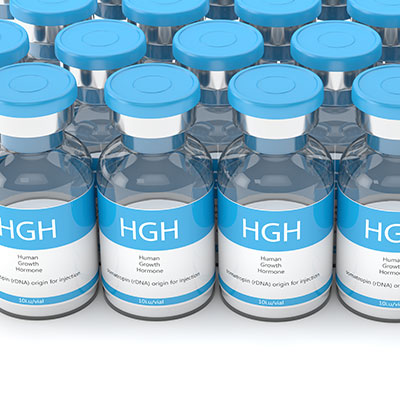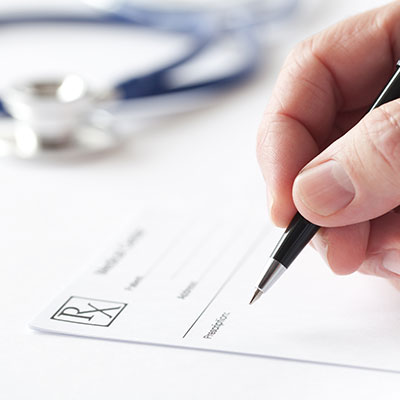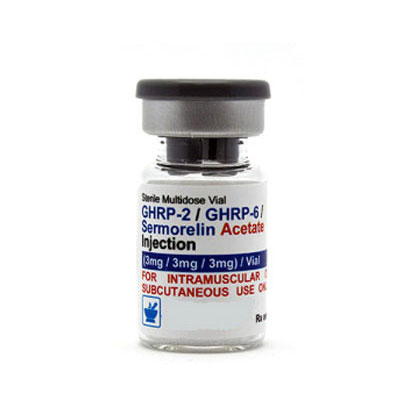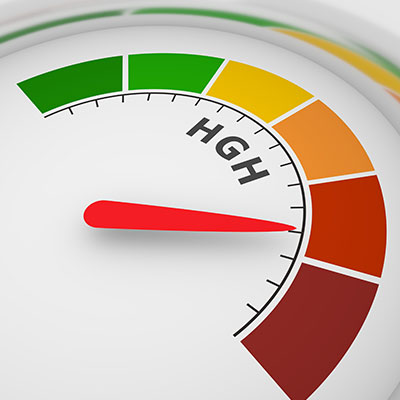Sermorelin Therapy Benefits and Side Effects
Contents
For certain patients suffering from growth hormone deficiency, sermorelin therapy could be an alternative to human growth hormone (HGH) therapy.
Sermorelin is a prescription medication used to treat qualified patients for growth hormone deficiency. However, like any drug or medication, it has benefits as well as side effects. This page will discuss the benefits and the side effects of sermorelin therapy.
Sermorelin is a synthetic version of a family of naturally occurring biological compounds that are known as growth hormone-releasing hormones or GHRH. In adults that may be suffering from a growth hormone deficiency (GHD), sermorelin can be prescribed to stimulate your pituitary gland to release more growth hormone.
Depending on your symptoms and degree of GHD, sermorelin therapy could be an effective alternative to growth hormone replacement therapy.
Sermorelin Benefits
For patients who meet the criteria for sermorelin therapy, it can provide many of the same benefits of growth hormone therapy, such as:
- Improved sleep
- More energy and endurance
- Enhanced libido and improved sexual performance
- Stronger immune system
- Improved metabolism and fat reduction
- Enhanced cellular repair and growth which benefits internal organs, muscles, bones, skin, nails, and hair
- A more youthful and healthy appearance
- Decreased joint pains and stiffness
- Sharper brain functions and memory
- Increased focus, drive, motivation, and productivity
- Happier mood and brighter outlook
- Lower LDL and total cholesterol
- Improved heart health
- Improved healing from injuries, shorter recovery time from illness
Since sermorelin therapy provides many of the same benefits as traditional growth hormone therapy, only your doctor can determine if you can manage with an HGH alternative like sermorelin or you need HGH therapy.
In some cases, sermorelin injections alone may be enough to bring your levels back to what is best for you and achieve the above benefits. If your doctor believes you are a good candidate, sermorelin therapy could be a lower-cost alternative to growth hormone therapy.
How to Get the Most Benefits From Sermorelin Therapy

HGH and sermorelin therapy can both be used to treat adults with GHD. The main difference is in the way that they do so. HGH therapy increases your level of HGH by adding actual HGH made from human DNA directly into your body. Sermorelin, on the other hand, is not HGH, but when introduced, it triggers your body to make more HGH.
Both ipamorelin and sermorelin stimulate the secretion of human growth hormone with few if any negative side effects. They differ only in the length of their respective amino acid chains, and therefore, they interact with different receptor sites in the brain and pituitary.
Alone, either has been proven effective in treating adults with low-level GHD. There is also current research that indicates there are some additional benefits to be had in combining these two therapies.
Sermorelin Side Effects
Sermorelin injections are FDA approved for the treatment of growth hormone deficiency. It is generally regarded as safe, and most of our patients go through their course of sermorelin therapy with few if any issues.
However, like any drug or medical procedure, sermorelin therapy is not without its risks. Here are some of the potential side effects of sermorelin therapy.
According to the prescribing information, sermorelin should not be used in patients who are pregnant or breastfeeding, have a history of diabetes, underactive thyroid, or have a history of blood sugar problems.
Potential side effects of sermorelin include:
- injection site reactions (such as pain, swelling, or redness),
- headache
- flushing
- difficulty swallowing
- dizziness
- hyperactivity
- sleepiness
- nausea
- vomiting
- hives
Why Might You Experience Side Effects From Sermorelin Injections?
Most often, the reason that you may experience side effects from sermorelin is if you are allergic to it or any of the components in the sermorelin injection or interactions with other medications. Tell your doctor about any allergies you may have or other medications you are taking.
Other than allergies or drug interactions, the other most common reason why you may experience sermorelin side effects is if you are using it illegally or not taking it in the way it was prescribed for you. Only use sermorelin with proper medical supervision and follow your doctor’s instructions. Do not use sermorelin that may have been prescribed for someone else, and never take more than your prescribed amount.
How to Best Avoid Any Sermorelin Side Effects
The best way to avoid sermorelin side effects is to get your sermorelin therapy from an experienced and reputable clinic that specializes in age-related hormone decline like ours. Then, make sure that you always follow your doctor’s instructions and never take more than your prescribed dose of sermorelin.
Finally, if you do experience any side effects from your sermorelin injections, tell your doctor about them immediately. Any sermorelin side effects can usually be mitigated by simply adjusting your dose of sermorelin.
Your prescription for Sermorelin will be tailored to best meet your particular goals and lifestyle. You will be carefully monitored over the course of your treatment with Sermorelin, so any chance of side effects should be kept to a minimum. Tell your doctor if you are experiencing any of these or other side effects while taking Sermorelin.
What Does the Medical Research Have to Say About Sermorelin Therapy?
There have been several sermorelin studies to date that validate the use of sermorelin as an alternative to HGH to treat GHD in some cases.
One of the earliest studies to suggest that sermorelin could be a viable alternative to HGH was published in 1996, which established that sermorelin could have similar therapeutic effects as HGH when prescribed for children who were failing to achieve growth milestones. Trusted sourceOnce daily subcutaneous growth hormone-releasing hormone therapy accelerates growth in growth hormone-deficient children during the first year of therapy.Oxford University PressGo to sourceThat study concluded,”[sermorelin] administered as a once-daily dose of 30 micrograms/kg GHRH.(1-29), s.c., was effective in increasing height velocity in GH-deficient children.”
A 2006 study published in the medical journal Trusted sourceSermorelin: A better approach to management of adult-onset growth hormone insufficiency?NCBIGo to sourceClinical Interventions in Aging concluded that peptide therapies such as sermorelin have fewer side effects and, in many cases, can be preferable to human growth hormone, particularly when sermorelin is prescribed for “anti-aging.”
A study looking at the Trusted sourceEffects of single nightly injections of growth hormone-releasing hormone (GHRH 1-29) in healthy elderly menPubMedGo to sourcebenefits of GHRP therapy for elderly men concluded that sermorelin injections “may increase muscle strength, and it alters baseline relationships between muscle strength and muscle bioenergetics in a manner consistent with a reduced need for anaerobic metabolism during exercise.”
HGH is released in “pulses.” These pulses are at their highest at night during sleep. It has been found that overweight males exhibit fewer nightly pulses of HGH. A Trusted sourceEffects of a Growth Hormone-Releasing Hormone Analog on Endogenous GH Pulsatility and Insulin Sensitivity in Healthy MenOxford University PressGo to source2011 study found that the use of “GHRP analogs” similar in chemical structure to sermorelin effectively increased the nightly release of HGH in overweight men.
These are just a few examples of the multitude of clinical studies on the benefits of sermorelin. Taken together, these sermorelin studies help validate sermorelin’s safety and efficacy in stimulating the production of human growth hormone and that it is a viable alternative -in some cases – to growth hormone therapy.
Now that you know a lot more about the pros and cons of sermorelin therapy, why not contact us today and find out more about the many life-changing benefits of growth hormone therapy?
FAQ
1. What Is Sermorelin?
Sermorelin is part of the family of growth hormone-releasing agents. As a releasing agent, sermorelin stimulates your pituitary gland to produce more of your own natural growth hormone. Generally speaking, sermorelin is less expensive and has fewer possible side effects than growth hormone therapy.
2. What Is the Difference Between Sermorelin and HGH?
Human growth hormone (HGH) is a critical hormone involved in cell and tissue growth, produced by the pituitary gland. HGH peptides such a sermorelin stimulate the pituitary gland to make HGH. Since the purpose of HGH peptide therapy is to increase the production of HGH, generally speaking, the two therapies have the same benefits.
The differences basically lie in their ability to achieve said benefits. In some cases, GHRP therapy alone is enough to treat your symptoms of growth hormone deficiency. Sometimes peptide therapy is used in conjunction with growth hormone replacement.
3. What Are the Advantages of Sermorelin Therapy?
The main advantage of alternative HGH therapies, if you qualify, is the cost. If your symptoms of growth hormone deficiency can be effectively managed by GHRP therapy, you could save quite a bit of money on your treatment. The average monthly cost of sermorelin or ipamorelin injections is significantly lower than HGH injections. On average, HGH injections cost anywhere from $750 to $2000 per month, depending on the dose and brand of HGH. Sermorelin injections cost about $400 to $750 per month.
4. Do You Need a Prescription for Sermorelin Therapy?
Yes. You cannot, under any circumstances, legally purchase sermorelin, ipamorelin, or any authentic GHRH online or anywhere else without a doctor’s prescription. HGH peptide injections are a type of growth hormone therapy. Like human growth hormone (HGH), you need a doctor's prescription for HGH peptide therapy. Sermorelin and similar growth hormone peptide therapies are only given via injections. You cannot legally obtain GHRP injections without a doctor's prescription.
5. How Long Will I Need to Take Sermorelin?
Sermorelin therapy is given over the course of many weeks – usually for a period of three to six months, depending on your age, gender, presenting symptoms, medical history, and lifestyle.
One of the advantages of sermorelin therapy is that the gains you make tend to remain even after you stop taking sermorelin.
6. How Long Before I Will See Results from Sermorelin Therapy?
Sermorelin therapy is given over the course of many weeks. Individual results will vary. However, typically it takes 3-6 months to see the most common benefits of sermorelin treatment, such as increased lean muscle mass; reduced body fat; increased bone density and collagen production; increased bone density; enhanced immune system and cardiovascular function, pancreatic and liver function; and optimal increases in energy and vitality.
7. Are HGH and Sermorelin Ever Given Together?
Depending on your symptoms, growth hormone therapy alone or sermorelin therapy may be an effective treatment. However, studies have shown that there are patients who can benefit from a combined therapy of both used together.
HGH therapy and sermorelin therapy can be used together. In patients whose levels and symptoms cannot be treated by sermorelin alone, your doctor may prescribe combination therapy. But, only your doctor can determine if such combined therapy is right for you.
8. Is Sermorelin the Only Peptide Alternative to HGH?
There are many other HGH peptides similar to sermorelin that may also be prescribed as a potential alternative to HGH therapy. The second most commonly prescribed HGH alternative is Ipamorelin.
Both ipamorelin and sermorelin stimulate the secretion of human growth hormone with few if any negative side effects. They differ only in the length of their respective amino acid chains, and therefore, they interact with different receptor sites in the brain and pituitary.







